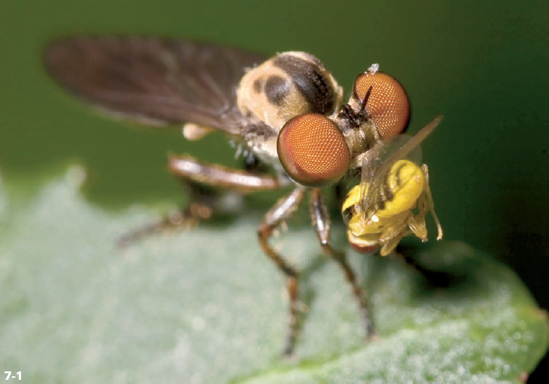Chapter 7. INSECTS
Photographing Insects
Approaching Insects
Working with Insects in Their Environment
Moving Subjects and Shallow Depth of Field
Photographing Insects in Flight
One of the first things that attracts people to macro photography is the pictures that this particular branch of photography became famous for: The ubiquitous macro depictions of dragonfly eyes, menacing spiders, and other insects, like the one shown at 7-1.
Whether you like insects or not, chances are that you still find them interesting. Most insects are too quick for you to be able to get a close look at them. Even when they are sitting still, do you really want to go stick your face that close to a spider — even one as friendly-looking as the one in 7-2? Macro photography offers a safety barrier between the photographer and the insect, while simultaneously offering a way to magnify, explore, and inspect the subject.
Although it is one of the most popular areas of macro photography, photographing insects is also one of the more complicated ones. Most insects are tiny and difficult to find in the first place, and when you do find them, they rarely sit still. Nevertheless, there's a special corner reserved in macro photography heaven for photographers who manage to capture a good photo of, say, a spider.

Figure 7.1. ABOUT THIS PHOTO A fly with its prey in direct sunlight. Taken with a Canon 100mm f/2.8 macro lens ...
Get Macro Photography Photo Workshop now with the O’Reilly learning platform.
O’Reilly members experience books, live events, courses curated by job role, and more from O’Reilly and nearly 200 top publishers.

